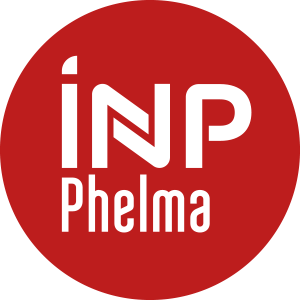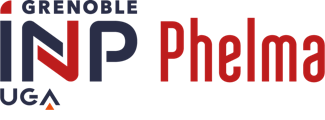Number of hours
- Lectures 10.0
- Projects 0
- Tutorials 6.0
- Internship 0
- Laboratory works 0
ECTS
ECTS 2.0
Goal(s)
Preparation for the Nuclear Materials course (S8)
This course consists of 3 parts:
1. An introduction to steels
2. A reminder of of Continuum Mechanics course: as well as some complements not covered in 1A PMP
3. A presentation of dislocations, defects at the origin of plasticity in metals
Content(s)
3 parts:
1. Steels :
Pure iron and iron alloys - Fe C phase diagrams - Microstructures of steels "at equilibrium" - Designation of steels - Non-equilibrium cooling - Tempering after quenching - Some examples of steels used in nuclear field.
2. Reminder of Continuum Mechanics course:
Stresses - trainss - Linear elastic behaviour law: part rather reserved for students not coming from PMP
Mohr's circle - Plasticity criteria - Application to pressure vessel calculations.
3. Dislocations
Description and movement of dislocations - Strain and stress fields of rectilinear dislocations - Line tension - Forces on dislocations - Interactions between dislocations - Interactions between dislocations and other crystal defects.
Prerequisites
Course 1A: PMP Core
Continuum Mechanics
En présentiel
SESSION NORMALE :
Types d'évaluation (examen écrit, oral, CC, TP, Rapport, ...) :
*Évaluation rattrapable :*
Type d'évaluation :
Durée :
Documents autorisés :
Documents interdits :
Matériels spécifiques autorisés :
Calculatrice :
Possible en distanciel :
Commentaire :
*Évaluation non rattrapable :*
Type d'évaluation :
Durée :
Documents autorisés :
Documents interdits :
Matériels spécifiques autorisés :
Calculatrice :
Possible en distanciel :
Commentaire :
SESSION DE RATTRAPAGE :
Types d'évaluation (examen écrit, oral, CC, TP, Rapport, ...) :
Type d'évaluation :
Durée :
Documents autorisés :
Documents interdits :
Matériels spécifiques autorisés :
Calculatrice :
Possible en distanciel :
Commentaire :
-------------------------------------------------------------------------
En distanciel
SESSION NORMALE :
Types d'évaluation (examen écrit, oral, CC, TP, Rapport, ...) :
*Évaluation rattrapable :*
Type d'évaluation :
Durée :
Documents autorisés :
Documents interdits :
Matériels spécifiques autorisés :
Calculatrice :
Commentaire :
*Évaluation non rattrapable :*
Type d'évaluation :
Durée :
Documents autorisés :
Documents interdits :
Matériels spécifiques autorisés :
Calculatrice :
Commentaire :
SESSION DE RATTRAPAGE :
Types d'évaluation (examen écrit, oral, CC, TP, Rapport, ...) :
Type d'évaluation :
Durée :
Documents autorisés :
Documents interdits :
Matériels spécifiques autorisés :
Calculatrice :
Commentaire :
Session 1 version présentielle : Note DS
Session 1 version confinée : (1 x note QCM + 2 x note DS) / 3
Session 2 version présentielle :
si moins de 8 étudiants : note Oral
si plus de 9 étudiants : note DS
Session 2 version confinée :
si moins de 8 étudiants : Note Oral
Si plus de 9 étudiants : (1 x note QCM + 2 x note DS) / 3
J.P. HENRY et F PARSY, Cours d'Elasticité, Dunod.
HULL D., BACON D.J., Introduction to dislocations, Pergamon Press.
JAOUL B., Etude de la plasticité et application aux métaux, Dunod.



